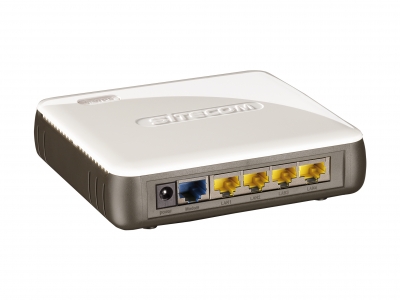192.168.1.2
The understanding of IP addresses and especially specific addresses such as 192.168.1.2 is indispensible for any person interested in the maintenance and usage of private networks. Network administrators and managers can ill afford any half baked knowledge of such private and default IP addresses as routine troubleshooting and network administration is highly dependent on a proper understanding of these concepts.
192.168.1.2 belongs to the list of default private IP addresses that are in widespread use in networking solutions. This address is a part of the 192.168.x.y family of private addresses in IPv4 class. Devices belonging to different networks can have the same IP address but this does not hold for devices operating as a part of a single network. Private addresses are those used with private networks, in other words the networks that do not need to be a part of the global Internet and are used in a localized space such as homes, offices and small buildings. Such addresses can be easily used without the requirement of a special permission from any Internet registry, purely because of the reason that these are not globally delegated. This also means that 192.168.1.2 can’t be used to access the router from any place or terminal outside the realms of the home network. If such an access is desired, 192.168.1.2 does not solve any contacting purpose and the router’s public IP address has to be used in such a case. Typically, a router comes with two IP addresses that are visible to other computers and devices. One of these is for access within the network and the other is for access from beyond the original network.
Many networking equipment manufacturers use 192.168.1.2 with their routers as the default IP address. This means that the address, that is 192.168.1.2, is included within the firmware of the router. When this router is connected with a device such as a computer, a simple browser can be used to access the administrative controls of the router. The network administrator is just required to specify an address of http://192.168.1.2/ and he/she is then logged on to the console of the router. Any internet browser serves the purpose of acting as the vehicle that takes administrators to the control panel of the routing equipment using 192.168.1.2 as the default address. Some manufacturers use IP addresses like 192.168.1.1 or 192.168.o.1. Upon connection with the control panel, the user is prompted for a username and a password. Generally, the username and password are known to the administrator at the first access and there is provision to change them. Some manufacturers use the default username and password of ‘admin’, whereas others might also allow a blank username and the word ‘password’ as a password. If you do not know the access credentials, you can always run a quick check on the World Wide Web for your model name or contact the manufacturer representatives for the same. It is important to understand that this ‘default’ address does not limit the flexibility of the users. In fact, the default IP address of 192.168.1.2 can be very easily changed by the administrators and users of these routers. Depending upon the needs and requirements at hand, any other address different from 192.168.1.2 can also be associated with the router.

Of the popular networking equipment manufacturers that use 192.168.1.2 as the default IP address with their routers and access points, Philips and Senao are the prominent ones. However, this does not mean that routers from any other manufacturer are not compatible with the usage of 192.168.1.2. In fact, any router or a computer that is a part of a local network can be easily made to use 192.168.1.2, irrespective of whether the address was included in the firmware at the time of manufacturing or not. The only constraint, however, is that a single network can use only a single instance of 192.168.1.2. Multiple usage of the same address will invariably lead to network collisions. However, the facts that routers operating within different networks can simultaneously use this address, and that the default address is itself flexible enough to allow change mean that this limitation does not take the form of a bottleneck for network engineers. Also, the viability of including this address in the firmware of broadband routers and access points remains considerably high for manufacturers of such equipment.